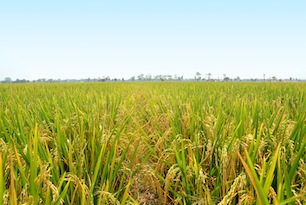Innovative Financing In Agriculture for Better Yield
 FAO estimates that the world population will grow from 7 billion in 2012 to 9.1 billion in 2050, which is a 30 percent increase. Food demand will grow faster as a result of accelerated urbanization and richer populations. To meet this demand, food production will have to increase by about 70 percent. They also estimate that 90 percent of the necessary production increases will have to come from increases in yield and intensive crop, while the remaining 10 percent is from the expansion of arable land.
FAO estimates that the world population will grow from 7 billion in 2012 to 9.1 billion in 2050, which is a 30 percent increase. Food demand will grow faster as a result of accelerated urbanization and richer populations. To meet this demand, food production will have to increase by about 70 percent. They also estimate that 90 percent of the necessary production increases will have to come from increases in yield and intensive crop, while the remaining 10 percent is from the expansion of arable land.
Ensuring that food production keeps up with the population increase and the changing climate conditions, is a heavy challenge currently facing developing and advanced countries around the world. To keep up with the pace of demand growth, yields need to improve drastically, yet there is little scope to expand the plantation area. Therefore, significant investment from the private sector will be needed.
The use of private sector funding as a catalyst for agricultural development investment is starting to receive a special attention, especially in terms of Innovative Financing (IF) concept. The concept itself is rooted in the UN system, with an emphasis on the sourcing of funds, including from the private sector. It was first mentioned in 2002 during the UN International Conference on Financing for Development in Monterrey, Mexico.
The Conference then established the Monterrey Consensus, where participants acknowledged the importance of innovative sources of finance that does not burden developing countries. Up until now, IF discussions focused on the macro-level sourcing of unconventional development funds, in addition to the traditional official development assistance (ODA).
Globally, there is a wealth of experience with the innovative agricultural finance that can inspire investors in many countries. This knowledge ranges from Australia’s experience with agricultural project bonds to China’s linking of agricultural finance and hedging; from Brazil’s rural bonds issued by farmers giving rise to a whole range of secondary capital market instruments to repo contracts traded on Colombia’s commodity exchange.
Under the Partnership for Indonesia’s Sustainable Agriculture (PISAgro), projects using the public– private partnerships (PPPs) approach are running in different parts of the archipelago, aiming to improve farmer’s productivity, income, and reduce CO2. For example in East Java, Cargill, Mosanto, and BRI have partnered to help 100 corn farmers in Mojokerto to improve their access to credit loans, corn seeds, and trainings since 2014. The project improved farmers knowledge on good agricultural practices. It succeeded in assisting farmers to produce more than 900 tons of corn from 50 hectares of land. In West Nusa Tenggara, Syngenta collaborates with, Bank Andara, Mercy Corps Indonesia, ACA Insurance, and BPR Pesisir Akbar (local bank) to establish a micro financing program in Dompu for retailers and 640 corn farmers in 55 farmer groups
In the early 1990s the concept of public–private partnerships (PPPs) emerged with a view to co-financing and implementing large-scale public projects in infrastructure, water supply, energy, etc., that governments found difficult to finance. Private sector involvement was, and still is, also considered important for increasing efficiency and innovation in the provision of services that in many countries used to be the exclusive domain of state-owned companies. These include water supply, health and education services, and so on. In the agricultural sector, PPP can be for financing agricultural infrastructures such as irrigation schemes or storage facilities, or providing services that will benefit smallholders.
However, such investment needs to be encouraged through supportive policy and regulatory, legal and institutional frameworks. This is important because of two main reasons. First, any investment solution will need financial services from the commercial banks. Yet commercial banks are mostly showed little interest in financing smallholders for concern over their return of investment, as the transaction costs are high compared to the size of loans. Therefore, the government plays an important role in providing supportive policy and regulations to make these smallholders more bankable, such as through a guarantee provision for loan.
Second, the IF can improve support for all components of value chain development that do not necessarily generate a financial return. An integration of products into a commodity exchange system is required, as the exchange provides reliable reference prices for an. This is the pivotal work that needs to be done by specialists, either government agencies or NGOs.
Integrating IF transactions with risk management transactions permits arbitrage and a flexible marketing strategy. Good policy and regulations can ensure that the flow of production from upstream to downstream can run effectively. This way, the IDF will not just beneficial for one commodity, but also to other related commodities, which will bring new players and new innovations to ensure agricultural sustainability.
Last but not the least, the existence of monitoring agencies are also required. They must be able to monitor whether IF issuers are using the funds they received for the intended purposes, and that products are not diverted surreptitiously to buyers unknown to the investors.
Cover photo @Bayer CropSciences